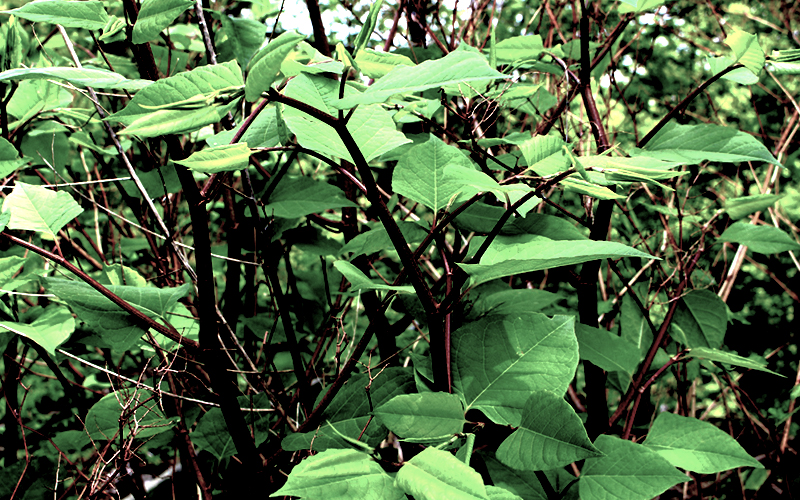By Noah Levin, Warren Conservation Commission intern
The 10- to 15-foot tall hedge of Japanese knotweed along the banks of the Mad River is a familiar site to most people who drive by. Knotweed is a nuisance for private and public land owners in The Valley, ultimately damaging fragile alpine ecosystems as knotweed has the ability to outcompete native plants and cause widespread erosion of rivers and roadside banks. For the past three years the Warren Conservation Commission (WCC) has been engaged in a knotweed eradication project, led by Warren resident and commissioner member Jito Coleman.
WCC has made significant progress in marking sites around the town of Warren, although Coleman believes that the real answer to completely controlling Japanese knotweed is community outreach in order to help people better understand the plant and how it can be controlled and eradicated.
“In the past, people have been afraid to even pull it up, for fear it would increase its spread. Folks just lack the knowledge and information about proper control methods,” Coleman said.
Now a few years into the project, he is ready to move on with the next step, confident that “since we know how to extract it and we know how to kill it, the next move is all about teaching others how to do it”.
WHAT IS KNOTWEED?
Japanese knotweed is an invasive plant that has rapidly spread around the world and across the United States over the last 100 years. First introduced for ornamental purposes, knotweed has spread to all but eight states. Knotweed spreads through its rhizomes, which can stretch out to 15 feet and send roots and shoots out of various nodes. These shoots are even capable of breaking through asphalt to find sun. Once knotweed is established it can grow quickly and outcompete native plants. Knotweed stands are dense monocultures. Knotweed secretes chemicals that inhibit other plants’ growth to further secure its dominance on a site.
To compound matters, gravel removal from knotweed contaminated rivers has now entered the gravel and soil supply chain. It is more and more difficult to get knotweed-free gravel or soil. This is now the main mechanism for knotweed transport. Knotweed goes uphill in gravel trucks and downhill in the rivers. It is showing up everywhere, far from the rivers. Roadways, septic systems, foundations are principal sites where new knotweed infestations are showing up.
WCC identified multiple locations at places such as Lincoln and Roxbury Gap where gravel had recently been spread and where knotweed was appearing in culverts and roadside ditches.
HOW DOES IT GROW
Knotweed is a perennial plant that stores its energy in its roots. In the spring it sends up shoots and also sends out rhizomes from the main roots, laterally, spreading the plant’s reach substantially each year. Each rhizome will send up numerous shoots along its path. In a dense knotweed patch, these rhizomes will crisscross each other forming a mesh net just below the surface of the ground.
Knotweed isn’t spread through seeds in Vermont and most of New England and the best chance for eradication is hitting it at its main source of stored energy – tap roots and root balls.
HOW TO CONTROL IT
Detaching new shoots before they can fully establish and send back energy to the roots will deplete the stored energy. If this strategy is repeated on a regular basis, the roots will be drained of their energy and the plant will die. But this is a lot easier said than done. Every infestation is different and needs to be assessed to understand what is the best approach and to estimate how long it will take to eradicate. Variables that influence these considerations are:
- How long has the infestation been on the site? I.e. How much stored energy is there? The shorter the time the better
- How deep was the original knotweed roots planted? Some roadside culverts could have knotweed roots planted many feet down, or it could be near the surface.
(Editor’s Note: This is part one of a two-part series on the Warren Conservation Commission’s work to eradicate knotweed.)







